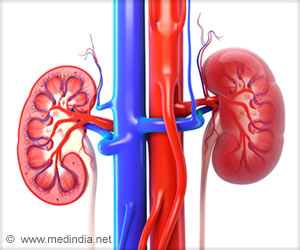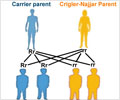- Rare genetic mutation in extended Amish family protects them from effects of aging and increases longevity.
- It is the first genetic mutation identified that protects human carriers from several aspects of aging.
- Amish who carry the mutation live 13% longer than their counterparts who do not carry the mutation.
- Mutation has allowed the synthesis of a “longevity drug” for humans as well as a drug to fight baldness.
What does the mutation do?
Amish individuals who carried the mutation had low levels of plasminogen activator inhibitor (PAI-1), which is a protein that plays a critical role in cell aging and death. While previous studies have shown that PAI-1 is related to aging in animals, its effect on humans was unclear, until now. Carriers of the mutation who had a single mutated copy had lower fasting insulin levels that offer protection from diabetes. They also had lower blood pressure and more flexible blood vessels representing a younger appearing cardiovascular system."The findings astonished us because of the consistency of the anti-aging benefits across multiple body systems," said Dr. Douglas Vaughan, the lead author of the paper who has been studying PAI-1 for almost 30 years.
"For the first time we are seeing a molecular marker of aging (telomere length), a metabolic marker of aging (fasting insulin levels) and a cardiovascular marker of aging (blood pressure and blood vessel stiffness) all tracking in the same direction in that these individuals were generally protected from age-related changes," Vaughan said. "That played out in them having a longer lifespan. Not only do they live longer, they live healthier. It's a desirable form of longevity. It's their 'health span.'"
How was the mutation identified?
It was Dr. Amy Shapiro, a hematologist at the Indiana Hemophilia & Thrombosis Center, who decided to help the family of a nine year old toddler who had bumped her head when she was three and had severe bleeding that required surgery. The girl almost died from severe bleeding during the surgery and required blood transfusion. She was the first old order Amish member identified with an unusual bleeding disorder.The bleeding disorder was identified to be the result of a genetic mutation that led to deficiency of PAI-1. Individuals who were affected with the rare disorder had two copies of the mutant genes. Individuals with a single copy of the gene were not affected
This was what Vaughan had to say about Shapiro’s study published in the New England Journal of Medicine in 1992;
"That was the gateway that could allow us to investigate the impact of a partial PAI-1 deficiency over a lifetime," Vaughan said.
"The work in the lab and the science of aging kept pointing to a relationship between PAI-1 and aging itself," Vaughan said. "We had showed in a previous study in mice that a partial deficiency of PAI-1 protected against aging-like changes. Was that true for human beings, too? Now we had an incredible, unique opportunity to test our hypothesis."
This led to the hypothesis that giving people a drug that blocks PAI-1 partially might provide protection against ill effects of aging as long as it provides incomplete inhibition.
"Longevity drug"
Northwestern in partnership with Tohoku University in Japan are involved in the development and testing of an oral drug, TM5614, which inhibits PAI-1. The phase 1 clinical trials have been completed and the drug is now undergoing the phase 2 clinical trial in Japan.An isolated population with an isolated mutation
The Amish population of Berne, Indiana, have been genetically and culturally isolated. Most of them are also distantly related. Their ancestors were from Switzerland who emigrated to Indiana in the middle of the 19th century. The Amish not residing in Berne do not carry the anti-aging mutation."This is the only kindred on the planet that has this mutation," Vaughan said. "It's a 'private mutation.'"
A treatment for baldness
A new class of drugs that specifically target PAI-1 was used to treat Vaughan's mouse model that over expresses human PAI-1. The mice were bald, had heart attacks and other pathologies caused due to excess of PAI-1. When the drug was fed to the mice for six weeks, something unexpected happened. The mice started growing hair! The research team is working toward the development of a formulation that will be tested to treat male pattern baldness.References:
- Sadiya S. Khan, Sanjiv J. Shah, Ekaterina Klyachko, Abigail S. Baldridge, Mesut Eren, Aaron T. Place, Abraham Aviv, Eli Puterman, Donald M. Lloyd-Jones, Meadow Heiman, Toshio Miyata, Sweta Gupta, Amy D. Shapiro and Douglas E. Vaughan. A null mutation in SERPINE1 protects against biological aging in humans. Science Advances, 15 Nov 2017 DOI: 10.1126/sciadv.aao1617
















